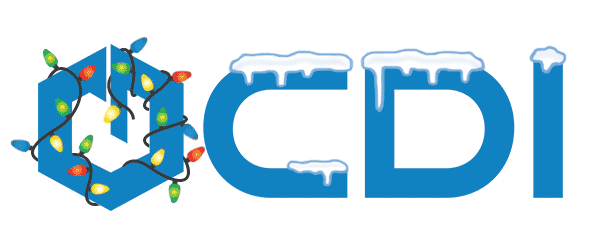How to Search Laserfiche and Get Results You Can Use
- Mar 26, 2018
- 5 min read
Have you wasted time looking for a document in Laserfiche that you know exists, but can’t seem to find? Many users are familiar with general searching, using keywords and other more basic searches. The search capabilities offered in Laserfiche are extensive. Learning the capabilities of Laserfiche search is key to traditional searching, system maintenance, document processing, and more.
The Laserfiche Windows and Web Client offers two types of repository searching, including a quick search and an advanced search. Let’s discuss these searches in a little more depth.
Quick Search
The quick search offers a built-in search bar, allowing easy searching form anywhere in the repository. Users can configure search criteria to search for information within a selected folder, document text, entry names and annotation text; with the ability to create customized searches for information that is searched on frequently. Laserfiche Finding documents in a hurry can be simple and efficient using the quick search feature. Note: the option for document text searching is available if documents are made fully text searchable.
Tips for Quick Searches:
Narrow down a search to a specific folder when possible to improve efficiency
Use Keywords
Only check the criteria used for searching
Save successful searches

Advanced Search
The advanced search allows many more options making searching a versatile tool for users. Setting filters with broad criteria at first, then narrowing the criteria for searches will achieve the optimal search result. The flexibility of the advanced search is beneficial, allowing users to combine multiple search types in one search. Another consideration with advanced searching verifying if the criteria being searched is indexed or not.
The Laserfiche repository can automatically index all new documents when they are created, ensuring that all documents containing text are searchable, and applies to all new documents, whether they are scanned or imported. It is enabled by default, but can be disabled to allow users to choose whether to index documents on a document-by-document basis. There are documents that may exist in the system that are not indexed by Laserfiche meaning they do not have any searchable text or the document has not been OCR'ed. To determine if documents are indexed simply look at the indexed column in the repository, to add the index column see the image below.

Tips for Advanced Searches:
Start broad and gradually narrow search criteria
Combine search types
Know the difference between indexed and non-indexed searches
Adjust the options to optimize the search
Consider using wildcards

Wildcards
Ever considered using wildcards to improve search results? Wildcards work best when there is unknown information such as a spelling of a word or name. The table below shows a few of the wildcard character options that can be used for searches.

Cities Digital's Favorite Searches
The team at Cities Digital have shared some of their favorite searches, hopefully, they can benefit your organization as well. These searches cover a variety of user levels from basic searches to advanced.
Basic
The front of the office personnel are essential in entering information in Laserfiche efficiently.
"This search I use most often. It allows you to see all the files contained within folders/sub-folders. Sometimes when we are doing metadata entry on specific files it makes it easier to search this than open all sub-folders." Krystal Mortensen, Office Assistant

Advanced
Cities Digital Consultants are working with users on a daily basis creating testing environments, sample folder structures and more.
"This is one of my favorite searches although it is using Search Syntax not the search user interface.
{LF:Name="*", Type="F"}-{LF:ChildName="*", Type=DFS}
This will return all empty folders in the repository so that they can be deleted. I use this search once a month. "- Ron Race, System Architect

Similar to Ron's search Jessica's search also uses the Advanced Search Syntax. change it up by setting your organization specific folder path.
"This is my Dev Docs Custom Quick Search.
{LF:Name="*%(SearchTerm)*", Type="D"} & ({LF:LOOKIN="\Documentation"})
It lets us use the quick search box for only Dev Documentation by any part of the document name. It is so much faster than looking through every folder to find the document I want!"- Jessica Welsch, Director of Consulting

The Cities Digital Support team works with users from all sorts of industries. Helping users increase their efficiency is a key way in which the support team benefits the customer.
"One of the searches I found helpful, while working with a government customer was in the advanced searching options

Search By Version (Can be very important when looking for classified or financial documents, that could pertain to a Public Disclosure Request) makes it easy to find the person, they are looking for.
Along with the Version, using the Selected Folders Radio Button and selecting Folders to search specifically within. Using the And Option add more Within calls, greatly reduces the call made to the Repository and reduces time spent searching. You can select as few or as many folder variables as you want." - Jeff Curtis, Senior Support Engineer
System Maintenance
The Support Team also identifies ways for customers to improve processes, performance and system maintenance solutions. Searching has proven to be a beneficial tool for that as well.
"I think one of the searches that is very helpful from a maintenance perspective is actually in the workflow designer.
You can perform a lot of different searches from within that application to check on the status of your workflows and to see if there may be problems. In some cases (especially early on) workflows can get stuck in process. When that happens, it can be utilizing server resources constantly checking for updates that never happen.
Within the designer, you can go to “view” and then “search to bring up the search menu:

At this point, there are a lot of searches that you can perform for various things, but for this particular case, performing a search for active, completed or terminated workflows can give you a broad picture of what workflow is doing.

If there are workflows that are active from several months or years ago, they are actively consuming resources as they try and complete which could cause the server to become less responsive. - Mike Richardson, Director of Support
Other Laserfiche components offer searching features like Workflow users can search processes in Forms, Quick Fields and the Connector. Also new the Laserfiche 10.3 app is an Android, iOS, and Windows app that lets you capture, upload, and securely access and work with documents and forms in and outside your Laserfiche repository while on the go. The app’s search pane has been updated to be more intuitive and uniform across multiple platforms.
Users can now search on specific field values, in addition to setting up and saving search criteria.
iOS users can use the new Spotlight search to search for offline documents and forms by document name, task name, form name, and process name.
The team at Cities Digital is happy to help with any questions you may have for optimizing your Laserfiche searches. Contact us at support@citiesdigital.com.




Comments